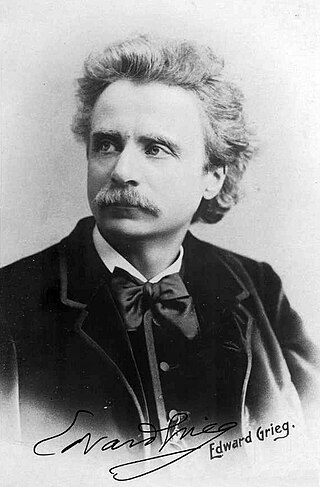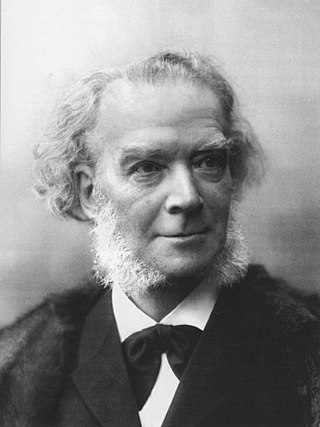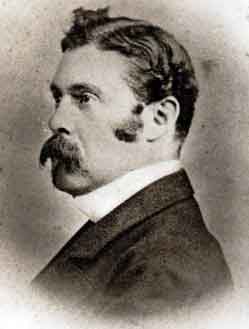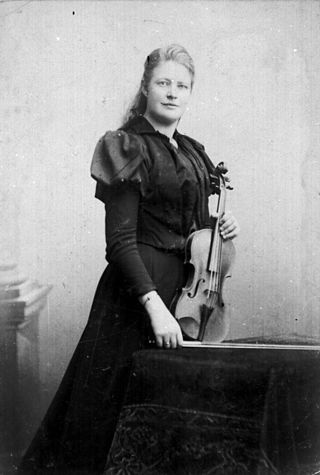Related Research Articles

Edvard Hagerup Grieg was a Norwegian composer and pianist. He is widely considered one of the leading Romantic era composers, and his music is part of the standard classical repertoire worldwide. His use of Norwegian folk music in his own compositions brought the music of Norway to fame, as well as helping to develop a national identity, much as Jean Sibelius did in Finland and Bedřich Smetana in Bohemia.

The Piano Concerto in A minor, Op. 16, composed by Edvard Grieg in 1868, was the only concerto Grieg completed. It is one of his most popular works and is among the most popular of the genre.

Eugène-Auguste Ysaÿe was a Belgian virtuoso violinist, composer, and conductor. He was regarded as "The King of the Violin", or, as Nathan Milstein put it, the "tsar".

Carl Heinrich Carsten Reinecke was a German composer, conductor, and pianist in the mid-Romantic era.

Lyric Pieces is a collection of 66 short pieces for solo piano written by Edvard Grieg. They were published in 10 volumes, from 1867 to 1901. The collection includes several of his best known pieces, such as Wedding Day at Troldhaugen, To Spring, March of the Trolls (Trolltog), and Butterfly (Sommerfugl).
Norwegian composer Edvard Grieg wrote three violin sonatas. They are all examples of his musical nationalism, since they all contain references or similarities to Norwegian folk song. Grieg wrote the sonatas between 1865 and 1887.
Dmitri Shostakovich's String Quartet No. 2 in A major, Op. 68, was composed in 1944 in just nineteen days in Ivanovo, 300 kilometres north-east of Moscow. It was premiered by the Beethoven Quartet and is dedicated to the composer Vissarion Shebalin. When Shostakovich began writing his Second String Quartet he had already completed eight of his fifteen symphonies. He was also half-way through his life. Another thirteen quartets remained to be composed, however, and they would come in rapid succession.
Edvard Grieg's Piano Sonata in E minor, Op. 7 was written in 1865 when he was 22 years old. The sonata was published a year later and revised in 1887. The work was Grieg's only piano sonata and it was dedicated to the Danish composer Niels Gade. The sonata has four movements with the following tempo markings:
- Allegro moderato
- Andante molto
- Alla Menuetto, ma poco più lento
- Finale: Molto allegro
The Serenade in D major for Violin, Viola and Cello, Op. 8, is a string trio composition by Ludwig van Beethoven. It was written from 1796–97, and published in 1797 by Artaria in Vienna.

Marie-Alexis de Castillon de Saint-Victor was a French composer.

Amanda Röntgen-Maier was a Swedish violinist and composer. She was the first female graduate in music direction from the Royal College of Music in Stockholm in 1872.
Eight Improvisations on Hungarian Peasant Songs, Op. 20, Sz. 74, BB 83, also known as Improvisations on Hungarian Peasant Songs or simply as Improvisations, is a composition for solo piano by Hungarian composer Béla Bartók. It was finished in 1920.
The String Quartet in B minor, Op. 11 was written in 1935–36 by Samuel Barber. Barber arranged the middle movement for string orchestra as his well-known Adagio for Strings in 1936. Barber continued to revise the piece, particularly the finale, until 1943.
- Molto allegro e appassionato
- Molto adagio [attacca]
- Molto allegro

The 50 Greatest Pieces of Classical Music is a selection of classical works recorded by the London Philharmonic Orchestra with conductor David Parry. Recorded at Abbey Road Studios, Royal Festival Hall and Henry Wood Hall in London, the album was released in digital formats in November, 2009 and as a 4-CD set in 2011. The 50 Greatest Pieces of Classical Music has sold over 200,000 copies and spent over three days as one of the top 10 classical albums on iTunes.
The Hungarian composer Zoltán Kodály wrote his Sonata for Solo Cello in B minor, Op. 8, in 1915. It was first performed in 1918 and published in 1921.

The three String Trios, Op. 9 were composed by Ludwig van Beethoven in 1797–98. He published them in Vienna in 1799, with a dedication to his patron Count Johann Georg von Browne (1767–1827). They were first performed by the violinist Ignaz Schuppanzigh with two colleagues from his string quartet. According to the violinist and conductor Angus Watson, these were probably Franz Weiss on viola and either Nikolaus Kraft or his father Anton on cello. Each of the trios consists of four movements:

The String Quartet No. 2 in G major, Op. 22, No. 2, is a chamber music work by the Romanian composer George Enescu, composed mainly between 1950 and 1951, though it has a lengthy pre-history and received a number of revisions in 1952 and possibly early 1953. The score is dedicated to the American pianist, composer, and arts patron, Elizabeth Sprague Coolidge. A performance of it lasts about 25 minutes.

String Quartet No. 1 in D major, Op. 25, by English composer Benjamin Britten, was written in the U.S. in 1941.

Gabriel Fauré's Piano Quartet No. 2, in G minor, Op. 45, is one of the two chamber works he wrote for the conventional piano quartet combination of piano, violin, viola and cello. It was first performed in 1887, seven years after his first quartet.
References
- Footnotes
- 1 2 Oelmann 2002 , p. vii
- ↑ Horton 1976 , p. 215
- ↑ Grimley 2006 , p. 6
- ↑ Strasser 2007 , p. 103
- ↑ Dahl & Chillingham 1999
- ↑ Grinde n.d.
- ↑ Horton 1976 , p. 56
- ↑ See Hofmeisters Monatsbericht for a notice of the 1879 publication/(April 1879) receipt (by HMB) of the score (Part.) and parts (St[immen]).
- ↑ Anderson 1994
- ↑ Anderson & Årdal 2012
- ↑ Strasser 2007 , pp. 103–105
- Sources
- Anderson, Keith (1994). Grieg: String Quartets Nos. 1 and 2/Johansen: String Quartet Op. 35 (CD). Naxos Records. 8.550879.
- Anderson, Keith; Årdal, Alf (2012). Grieg, E.: String Quartets (arr. for string orchestra)/Nordheim, A.: Rendezvous (CD). Naxos Records. 8.572441.
- Dahl, Erling; Chillingham, Levron (1999). Grieg: String Quartets (PDF) (CD). Hyperion Records. CDH55299.
- Grimley, Daniel M. (2006). Grieg: Music, Landscape and Norwegian Identity. Boydell Press. ISBN 1-84383-210-0.
- Grinde, Nils (n.d.). "Grieg, Edvard (Hagerup): 7. Chamber Music" . Grove Music Online . Retrieved 31 March 2013.
- Horton, John (1976). The Master Musicians: Grieg. London: J. M. Dent & Sons. ISBN 0-460-02169-9.
- Oelmann, Klaus Henning, ed. (2002). The Unfinished Chamber Music. A-R Editions Inc. ISBN 0-89579-510-8.
- Strasser, Michael (2007). Berlioz and Debussy: Sources, Contexts and Legacies : Essays in Honour of François Lesure . Ashgate Publishing. ISBN 978-0754653929.